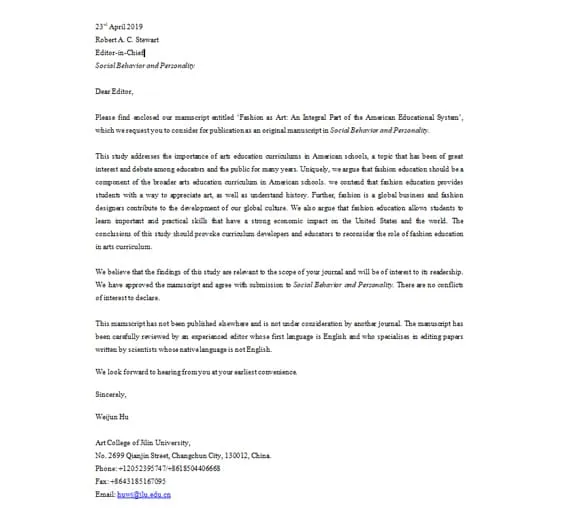Crafting the Perfect Cover Letter
Submitting your research to a scientific journal is a significant milestone. While the research itself is paramount, the accompanying cover letter plays a crucial role in securing your manuscript’s acceptance. This letter is your first direct communication with the editor, and it provides an opportunity to introduce your work, highlight its significance, and persuade the editor to consider your submission favorably. A well-crafted cover letter can significantly increase your chances of a positive initial impression and, ultimately, publication. Conversely, a poorly written letter can lead to immediate rejection, even if the research is of high quality. The cover letter is your advocate; make sure it speaks volumes about the rigor and importance of your work.
Understanding the Purpose of a Cover Letter
Why a Cover Letter Matters
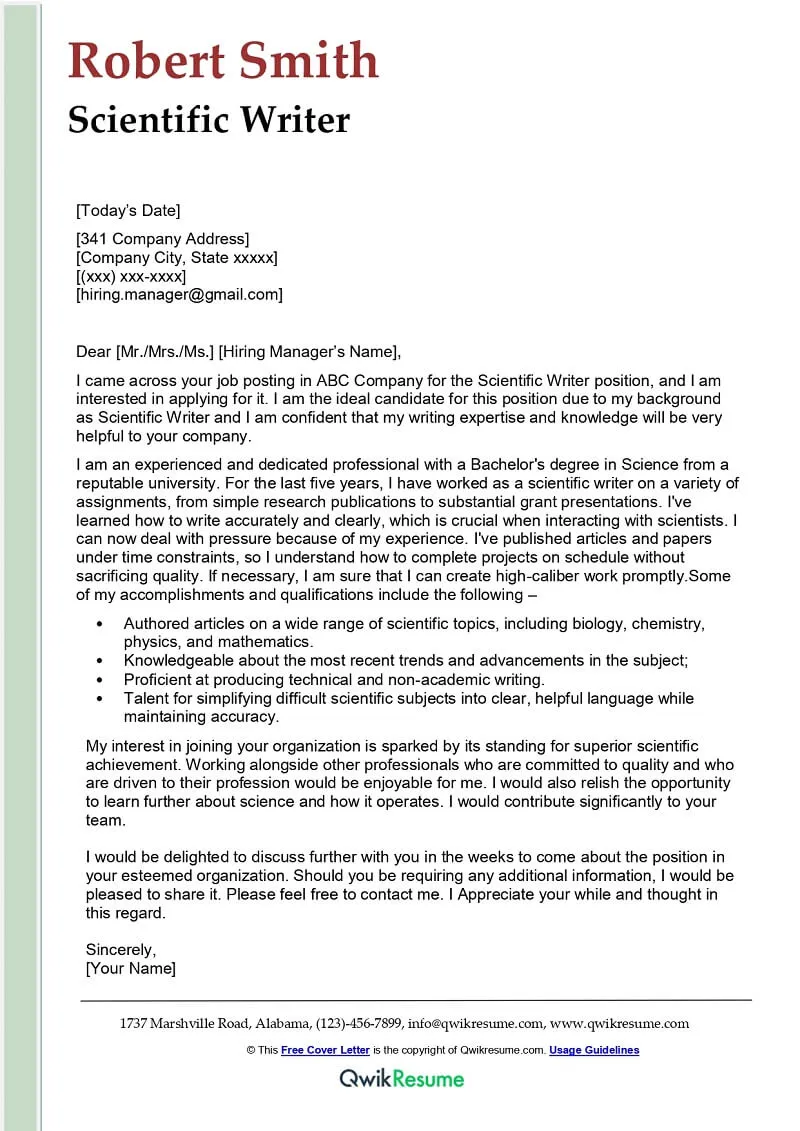
The primary goal of a cover letter is to introduce your research to the editor and briefly summarize its key aspects. It’s not just a formality; it’s an essential marketing tool. A strong cover letter captures the editor’s attention, demonstrates the significance of your work, and explains why it’s a good fit for their journal. It also provides context and clarifies any potential ambiguities or complexities in your research. The cover letter humanizes the submission, allowing the editor to understand the context and the authors’ passion for the work. It can signal the level of professionalism and attention to detail that the authors have. A well-written cover letter can make the difference between a desk rejection and a chance for peer review.
Key Components of a Cover Letter
Author Information and Contact Details
Start with your full name, affiliation, and contact information, including email address and phone number. This information ensures the editor can easily reach you for any questions or correspondence. Ensure this section is accurate and up-to-date. In the case of multiple authors, designate a corresponding author and provide their details, which is the person who will handle all communications with the journal. Double-check the formatting and ensure the information aligns with the journal’s specific requirements or template for author details. This helps to streamline the initial review process and avoid unnecessary delays.
Article Title and Journal Selection
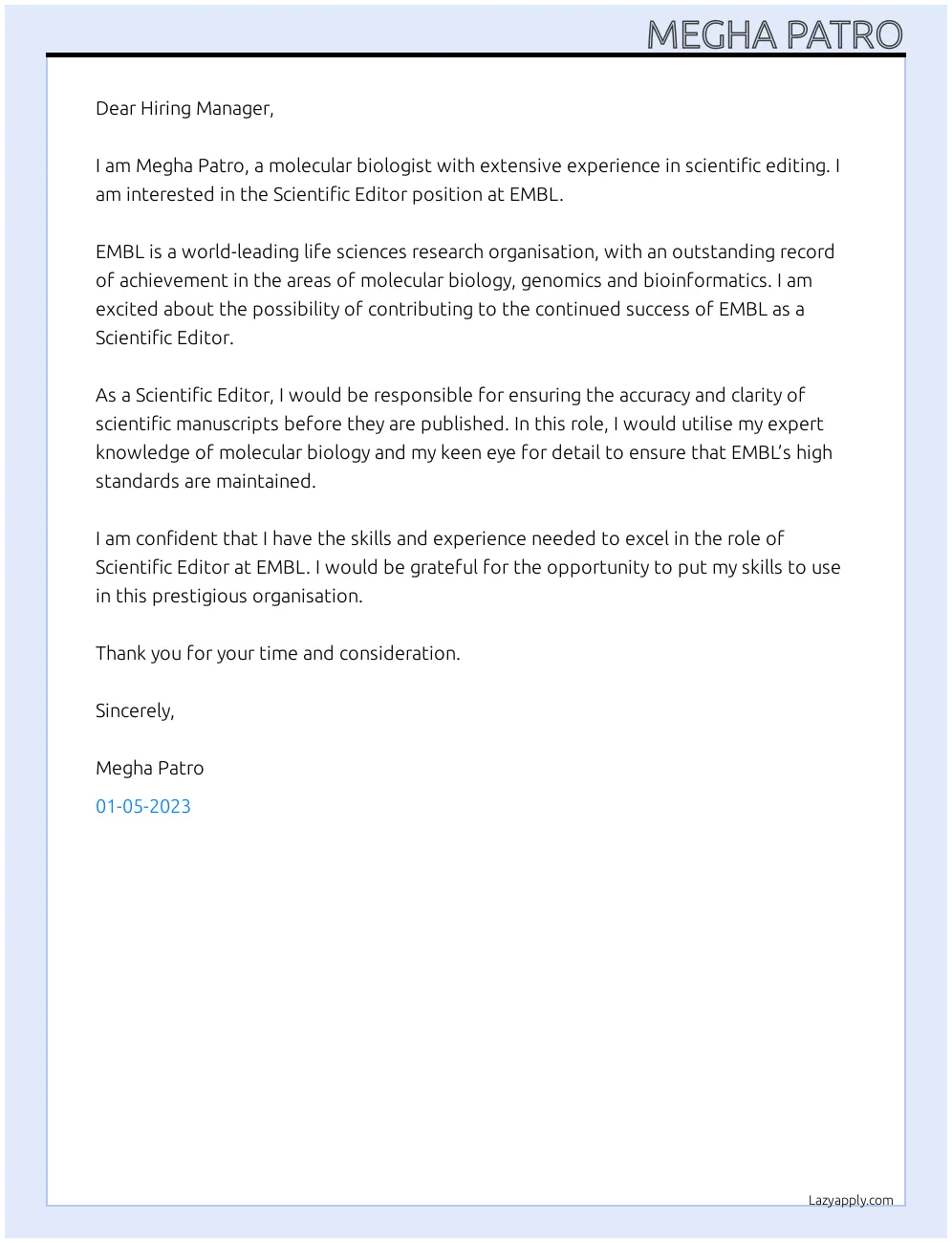
Clearly state the title of your manuscript and specify the journal to which you are submitting. Ensure the title accurately reflects the content of your research. Also, mention if the manuscript is a resubmission. Be precise, ensuring no typographical errors. In the case of selecting a journal, a cover letter helps the editor by explicitly stating why your research is suitable for their audience. Briefly justify your choice of journal, explaining how your research aligns with the journal’s scope, aims, and audience. This demonstrates that you’ve carefully considered where to submit your work and adds credibility to your submission. For this section, the author can use previous published article from the journals.
Brief Summary of the Research
Provide a concise summary of your research. In 2-3 sentences, explain the main objective, methods, key findings, and conclusions of your study. This section allows the editor to quickly grasp the essence of your research. Tailor the summary to be accessible to a broad scientific audience, avoiding overly technical jargon. Focus on the essential elements of your work, emphasizing the novelty and significance of your contribution. Use clear, concise language and avoid redundancy. Make sure your summary accurately reflects the content of your manuscript. A well-written summary can grab the editor’s attention, encouraging them to read the full manuscript.
Highlighting Key Findings and Significance
Expand on the significance of your findings. Explain why your research matters. Emphasize the novel aspects of your work, and explain its implications for the field. State the impact of your study on future research. Explain the importance of your results and their potential impact on the scientific community. You can also highlight any real-world applications or implications of your work. Focus on the innovative and impactful aspects of your research, and clearly articulate how your study contributes to the existing body of knowledge. Make sure you tailor your language to the specific scope and audience of the target journal. Highlight the innovative aspects of your study that will draw attention.
Confirmation of Originality and Ethics
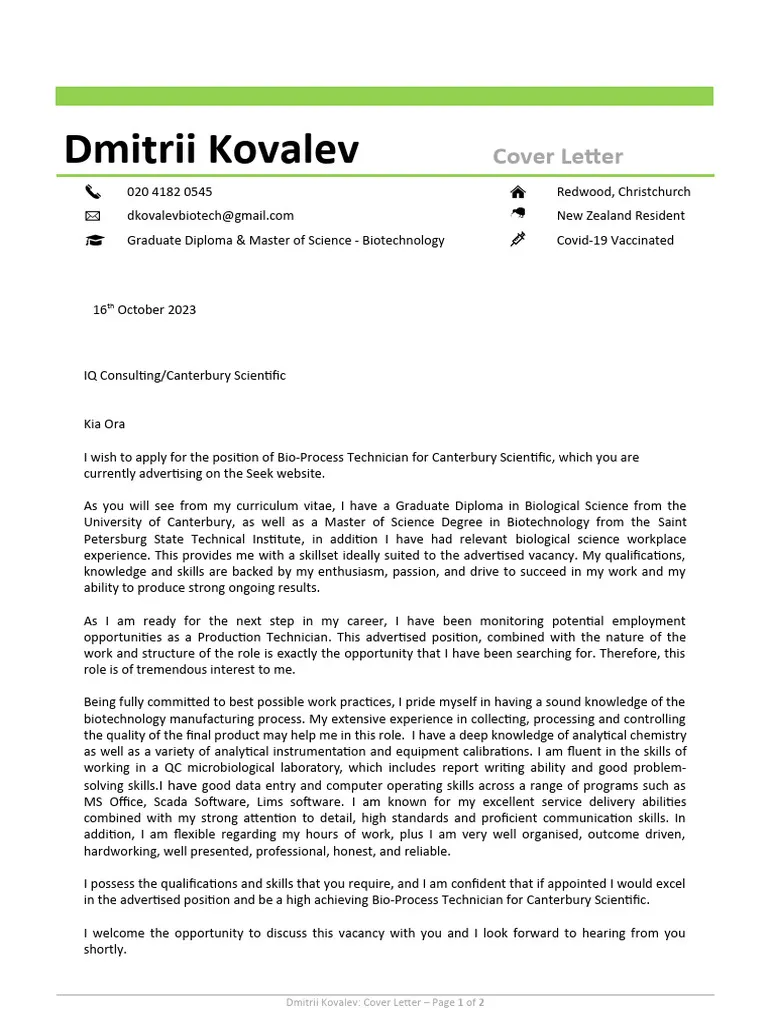
Include a statement confirming that your manuscript is original, has not been published elsewhere, and is not under consideration by another journal. Ensure you comply with all relevant ethical guidelines, including those pertaining to informed consent, animal care, and data integrity. Acknowledge any potential conflicts of interest and declare any funding sources. This section assures the editor of your commitment to ethical research practices. Include the necessary information regarding data availability, and that any research involving human subjects or animals was conducted in accordance with relevant ethical guidelines. Being transparent about these matters builds trust with the editor and the journal.
Addressing the Editor and Journal
Tips for a Strong Opening
Begin your cover letter with a professional salutation. Address the editor by name if possible, research the editorial board to identify the editor and ensure their name is correctly spelled. Briefly introduce yourself and your research. Express your enthusiasm for submitting your manuscript to their journal. Make a positive first impression by showing respect for the journal and highlighting the relevance of your work to their scope. You might refer to a recent article published in the journal or mention why you believe your research aligns with their mission. Avoid overly formal or generic greetings; instead, aim for a tone that is both professional and engaging. Be concise in your initial statements, clearly stating the purpose of your letter.
Tailoring the Letter to the Journal
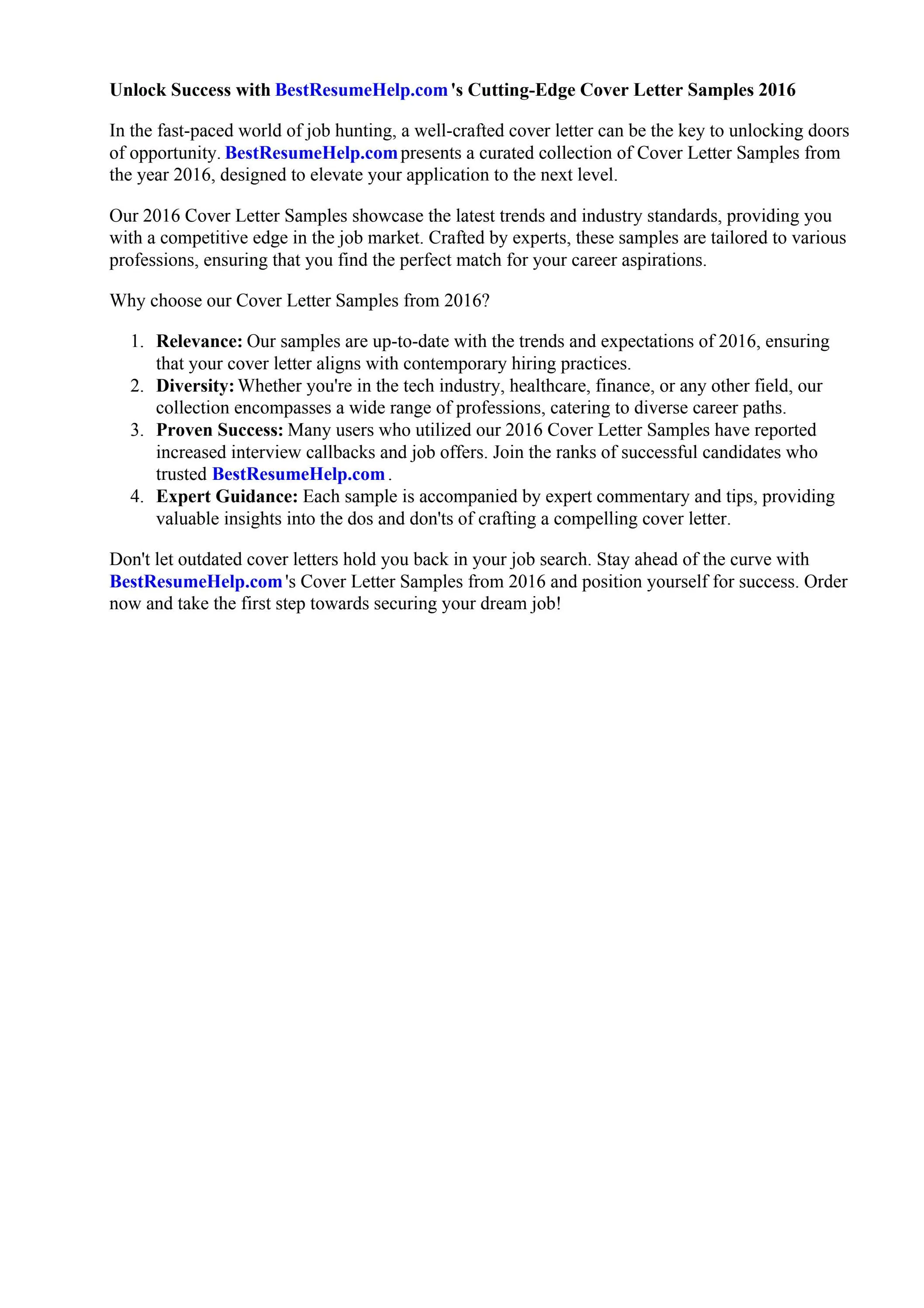
Customize your cover letter to each journal. Research the journal’s specific requirements, guidelines, and preferences before submitting. Mention how your research aligns with the journal’s scope and audience. Demonstrate your familiarity with the journal’s published content. Avoid a generic letter that could be sent to any journal. Tailor your language, highlighting specific aspects of your research that align with the journal’s focus and objectives. Addressing the editor or referencing a recent article published will show that you are familiar with the journal. This attention to detail demonstrates your commitment to the journal and increases your chances of a positive reception.
Maintaining a Professional Tone
Maintain a professional tone throughout your cover letter. Use formal language and avoid colloquialisms or overly casual expressions. Proofread carefully to eliminate any grammatical errors, typos, or inconsistencies. Be respectful in your tone and address the editor appropriately. Keep the language clear, concise, and focused on the key aspects of your research and its relevance to the journal. Ensure a tone of confidence and enthusiasm, but avoid hyperbole or exaggerated claims about the importance of your work. Professionalism helps build trust and respect with the editor. The cover letter should not sound like a sales pitch, but rather a well-informed introduction to your research.
Formatting and Style
Font and Layout
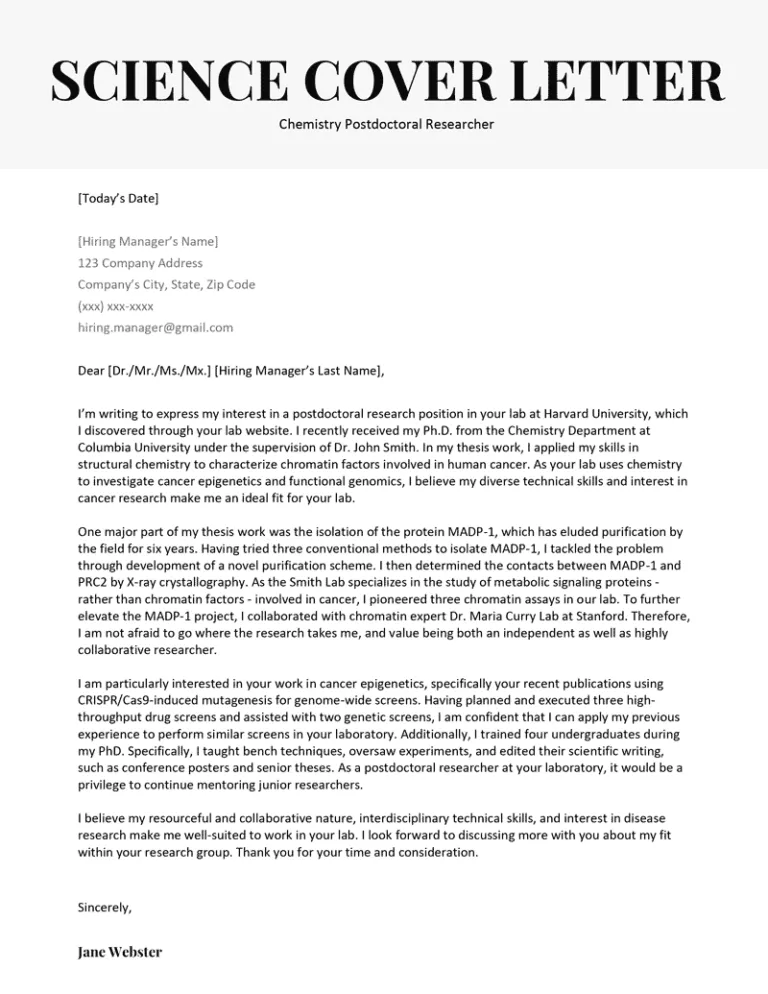
Use a standard font, such as Times New Roman, Arial, or Calibri, and a font size of 11 or 12 points. Maintain consistent formatting throughout the letter. Use standard one-inch margins. Keep the layout clean and easy to read. Use single-spacing within paragraphs and double-spacing between paragraphs. Structure the letter in a clear and logical manner, with distinct sections for different elements such as author information, research summary, and ethical statements. Follow the journal’s guidelines. Good formatting improves readability. Avoid complex or distracting fonts or formatting that might make the letter appear less professional or difficult to read. Clean formatting makes the letter look better.
Word Count and Structure
Keep your cover letter concise and focused. The ideal length is typically one page or less. Adhere to the journal’s specific word count restrictions. Focus on providing essential information. Use clear and concise language to present your key points. Avoid excessive detail or irrelevant information. Structure the letter logically, using paragraphs to separate different aspects of your research and arguments. Ensure the structure is easy to follow. A well-structured and concise letter is more likely to be read and appreciated by the editor. A succinct cover letter makes it easier for the editor to grasp the essence of your research.
Proofreading and Editing
Proofread your cover letter meticulously before submitting it. Check for grammatical errors, spelling mistakes, and punctuation errors. Ensure clarity and conciseness. Ask a colleague or a friend to review your letter. Feedback from another person can help you to identify areas that can be improved. Use spell-check and grammar-check tools, but do not rely on them solely. Proofread carefully for inconsistencies in formatting, tone, and style. Correct errors to maintain professionalism. Thorough proofreading can prevent errors from negatively affecting the journal’s impression of your work and ensures a polished and professional communication. Accurate proofreading significantly elevates the quality of your cover letter.
Common Mistakes to Avoid
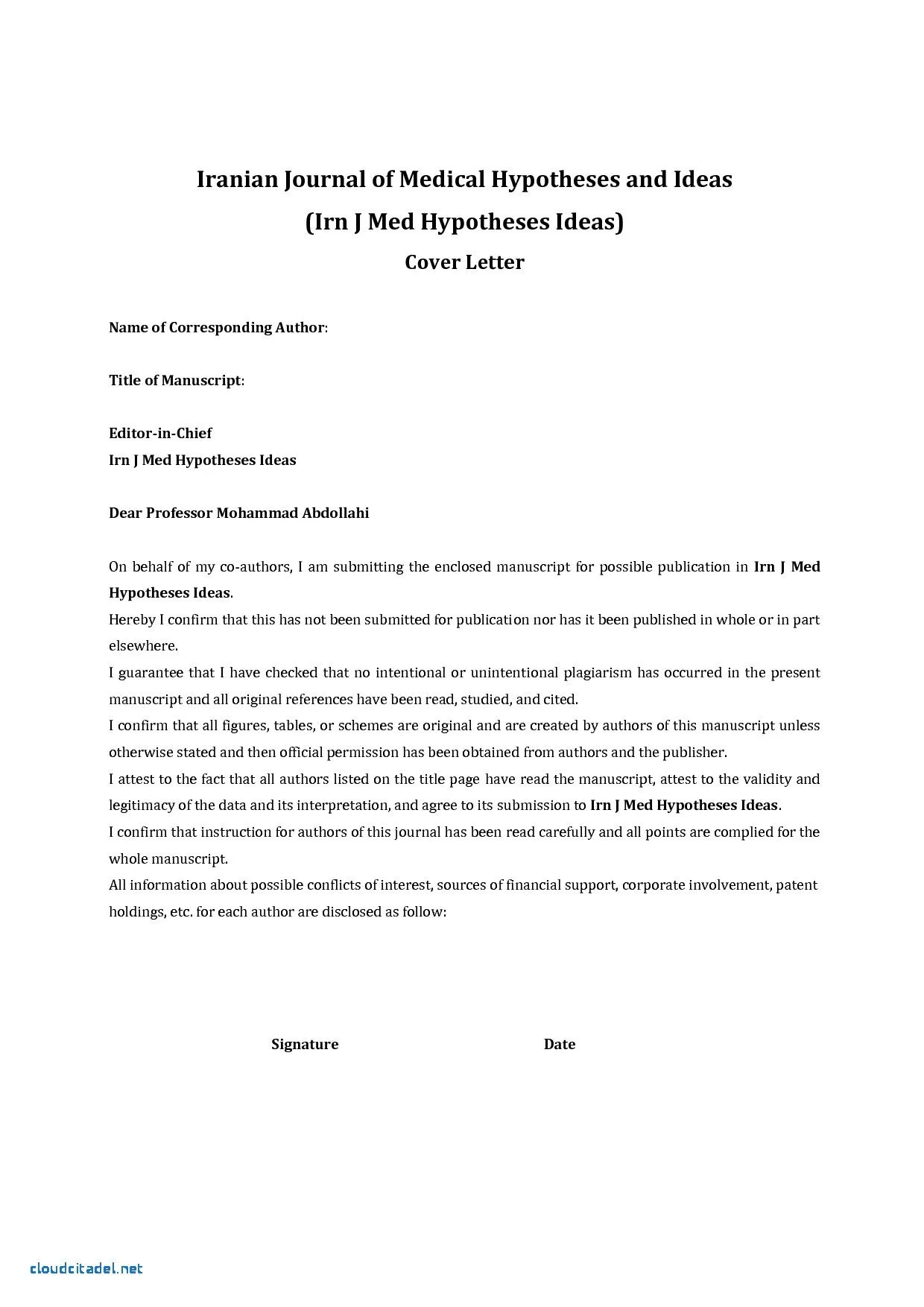
Grammatical Errors and Typos
Carelessly written letters filled with grammatical errors and typos can quickly lead to desk rejection. Always review your letter. Make sure that you are communicating in a way that is easy to understand. Pay attention to grammar, spelling, and punctuation. This undermines your credibility and signals a lack of attention to detail. Avoid common errors, such as incorrect subject-verb agreement, misplaced modifiers, and inconsistent tense. Proofread meticulously to eliminate errors and ensure that your writing is polished and professional. Always use spell check.
Generic or Vague Language
Avoid generic language and cliches that can make your cover letter seem impersonal. Customize your letter for the specific journal and tailor the language to the scope of your research. Be specific about the research and its significance. Avoid vague statements or generalities that don’t effectively communicate the essence of your study. Instead of saying, “This is an important study,” specify why it is important. Replace generic phrases with precise descriptions of your methods, findings, and conclusions. Demonstrating that you have carefully considered the journal, its scope, and its audience is the best way to avoid the appearance of a generic letter.
Ignoring Journal Guidelines
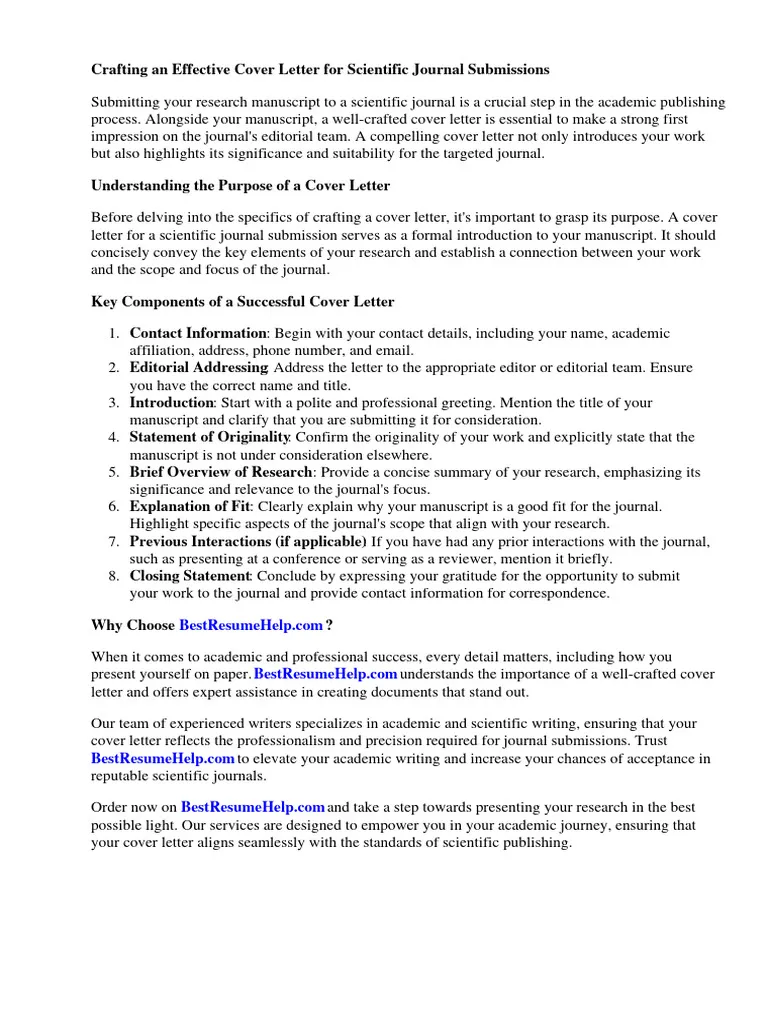
One of the most common and easily avoidable mistakes is failing to adhere to the journal’s guidelines. Ignoring the journal’s formatting instructions or word count limits can make your submission an easy target for rejection. Carefully review the journal’s instructions for authors. Make sure you are familiar with the requirements for cover letters. Pay close attention to specific instructions on content, formatting, and length. Failing to follow these instructions demonstrates that you have not taken the time to understand the journal’s requirements and can result in immediate rejection. Following the instructions, demonstrates that you value the journal and are serious about being published. Also, be sure to use the correct format.
Finalizing and Submitting Your Cover Letter
Before submitting your cover letter, review the entire document one last time. Double-check that all the information is accurate, complete, and formatted correctly. Confirm that you have addressed the editor appropriately and adhered to all journal guidelines. Ensure the final version of the cover letter matches the manuscript you are submitting. After submitting, keep a copy of the cover letter for your records. Keep track of the submission date and any correspondence from the journal. Prepare for peer review. The journal might request changes to your manuscript. Following these final steps, will significantly improve your chances of a successful submission and publication. A well-prepared cover letter is an essential part of the submission process, and can leave a lasting impression.
